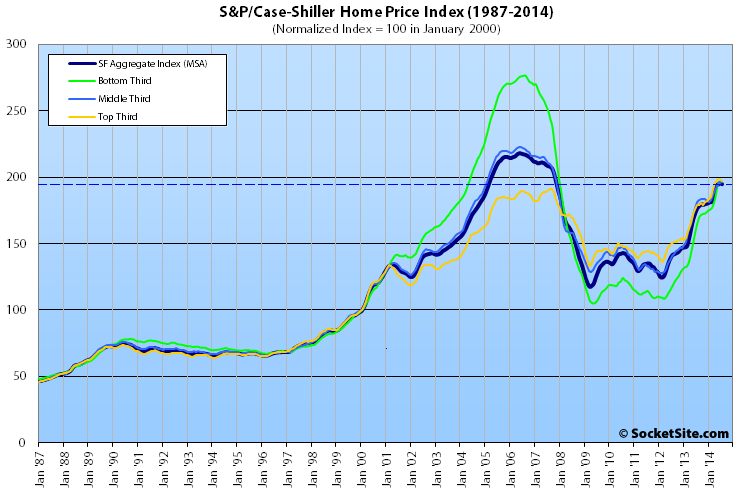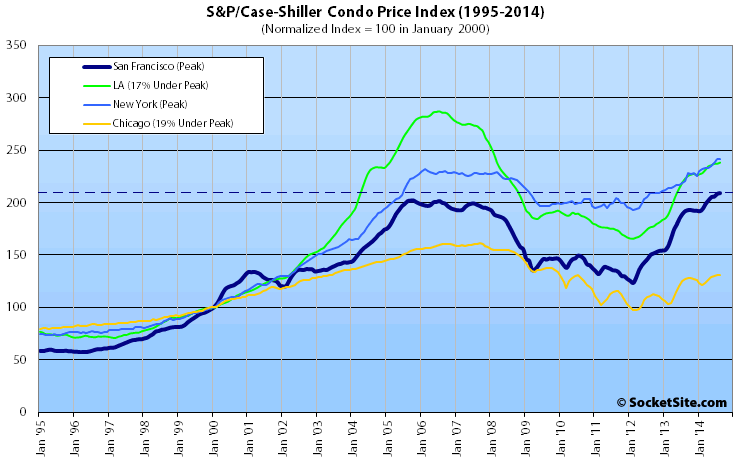Single-family home values within the San Francisco MSA slipped 0.4 percent from July to August but remain 9.0 percent higher than at the same time last year, according to the latest S&P Case-Shiller Home Price Index.
While the aggregate index for San Francisco home values has gained 65 percent since early 2009 it remains 10.9 percent below its 2006 peak and the year-over-year gain in August was the smallest since 2012.
The index for the top-tier of San Francisco homes dropped almost 1 percent in August but remains 9.4 percent higher versus the same time last year. The index for the middle third of the market gained 0.4 percent in August and remains 7.8 percent higher, year-over-year. And the bottom third of the market was unchanged in August, up 15.5 percent since August 2013.
According to the index, single-family home values for the bottom third of the market in the San Francisco MSA are back to just below May 2004 levels (29 percent below an August 2006 peak); the middle third is back to just above January 2005 levels (12 percent below a May 2006 peak); and values for the top third of the market are 2.4 percent above their previous peak in August of 2007, slipping 1.5 percent over the past two months.
While single-family home values slipped in San Francisco, condo values ticked up 0.3 percent in August to a new all-time high, up 8.9 percent over the past year and 3.4 percent above the previous cycle high reached in October of 2005. That being said, the pace of year-over-year gains for condos in San Francisco has slowed to its lowest level in over two years.
For the broader 10-City U.S. composite index, home values ticked up 0.2 percent from July to August and are running 5.5 percent higher on a year-over-year basis, the slowest pace since 2012 and 16.7 percent below their June 2006 peak.
Our standard SocketSite S&P/Case-Shiller footnote: The S&P/Case-Shiller home price indices include San Francisco, San Mateo, Marin, Contra Costa, and Alameda in the “San Francisco” index (i.e., greater MSA) and are imperfect in factoring out changes in property values due to improvements versus appreciation (although they try their best).

